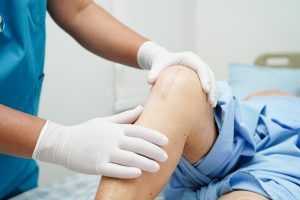Children’s amped-up immune systems allow them to beat back COVID-19 easily, producing a strong initial response that quickly slaps away the virus.
But there might be a price to be paid for that sharp reaction, a new study from Australia says.
Because the initial response provides such a swift takedown, kids’ immune systems don’t remember the virus and don’t adapt to be prepared for future infections, according to scientists with the Garvan Institute of Medical Research in Sydney.
As a result, their body still treats COVID as a new threat, opening them to becoming sick from future COVID infections.
“The price that children pay for being so good at getting rid of the virus in the first place is that they don’t have the opportunity to develop ‘adaptive’ memory to protect them the second time they are exposed to the virus,” lead author Tri Phan said in an institute news release. He’s head of the Intravital Microscopy and Gene Expression (IMAGE) Lab at Garvan.
Everyone’s immune system has two modes — the innate and the adaptive systems.
The innate immune system is mainly comprised of barriers like skin and mucosal surfaces that physically block viruses from entering the body. It also can generate general immune responses when it detects a foreign invader like a virus or a bacterium, although it can’t distinguish between specific pathogens.
On the other hand, the adaptive immune system contains B and T cells that serve as “memory” cells. This system learns to recognize and distinguish different parts of specific viruses, and can generate a rapid and targeted response to infection.
Babies start with an immune system blank slate, and rely on their innate immune system to defeat infections.
As they grow and are exposed to more viruses, their memory T cells learn how to make responses to those viruses.
“Children’s immune systems move from relying mostly on the innate system to needing the adaptive system as a backup as they grow older and are unable to clear viruses as rapidly,” said clinical lead researcher Dr. Philip Britton, pediatric infectious diseases physician at the Children’s Hospital at Westmead in Sydney.
For the new study, researchers genetically analyzed white blood cell samples to review T cell responses in children and adults, at the time of their COVID infection as well as one month later.
They performed this analysis in a group of seven children and their five household family adult contacts, following a mild or asymptomatic COVID infection. Two additional unrelated adults hospitalized with COVID were included in the study.
The researchers found that children successfully fought COVID off through the immune response in their upper airway, which relied on physical barriers like mucous as well as “naive” immune cells that attack any virus in sight.
However, the children had a poor memory T cell response to COVID after they recovered, meaning their immune system hadn’t learned how to target SARS-CoV-2 specifically. Essentially, their robust innate immune response undermines their adaptive response.
Adults were the exact opposite — few naïve T cells but great memory T cell responses after infection and recovery.
If these results hold, they provide additional support for childhood vaccination against COVID, the researchers argue.
Vaccination “will be required to bypass this immune bottleneck in the upper airway in children and allow them to generate long-lasting immunity,” they wrote in their paper, published in the January issue of the journal Clinical Immunology.
These findings could explain why the immune systems of older adults overreact to COVID, causing severe and life-threatening symptoms, Phan said.
COVID is caused by a coronavirus, the same family of viruses that also cause the common cold.
“When adults are infected for the first time with SARS-CoV-2, their memory T cells recognize only what they’ve seen before — like a familiar part of the coronavirus that is shared with the common cold coronaviruses,” Phan said.
“This may lock the immune system in to a misdirected response that is not specific to SARS-CoV-2,” Phan continued. “It provides an opportunity for the virus to escape and multiply unchecked to cause more severe symptoms as the immune system ramps up to try and fix the problem.”
More information
Johns Hopkins School of Medicine has more about the immune system.
SOURCE: Garvan Institute of Medical Research, news release, Jan. 26, 2023
Copyright © 2024 HealthDay. All rights reserved.















-300x169.jpg)









